Hyles calida calida
|
|
Updated as per http://sphingidae.myspecies.info/taxonomy/term/1284; March 16, 2017
|
Hyles calida calida
HYE-leezM kuh-LEE-duh
(Butler, 1881)
Hawaiian Sphinx
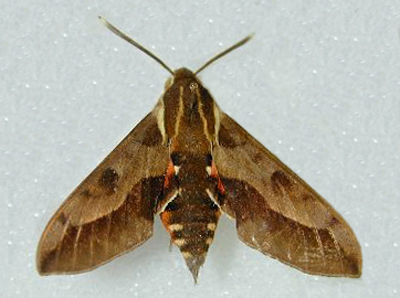
Hyles calida calida courtesy of Forest & Kim Starr from
Sphingids of
Hawaii
This site has been created by
Bill Oehlke. Comments, suggestions and/or additional information are welcomed by Bill.
TAXONOMY:
Family: Sphingidae, Latreille, 1802
Subfamily: Macroglossinae, Harris, 1839
Tribe: Macroglossini, Harris, 1839
Genus: Hyles Hubner, [1819] ...........
Species: calida calida (Butler, 1881)
|
DISTRIBUTION:
The Hawaiian Sphinx, Hyles calida calida (Wing span: ) flies in Kahului and Maui, Hawaii.
Jean Marie Cadiou writes, "This subspecies is on most islands, including Kauai. Calida hawaiiensis is only on the Big Island,
and so is H. wilsoni. The difference between c. calida and c. hawaiiensis is only visible on the hindwing."
In hawaiiensis the hw basal area is orange, while the same area in calida is black.
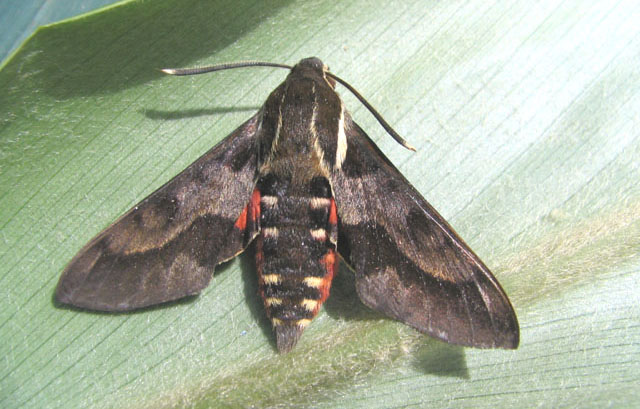
Hyles calida calida, posed (above and below), Kauai, Hawaii,
courtesy of Daniel Rubinoff.
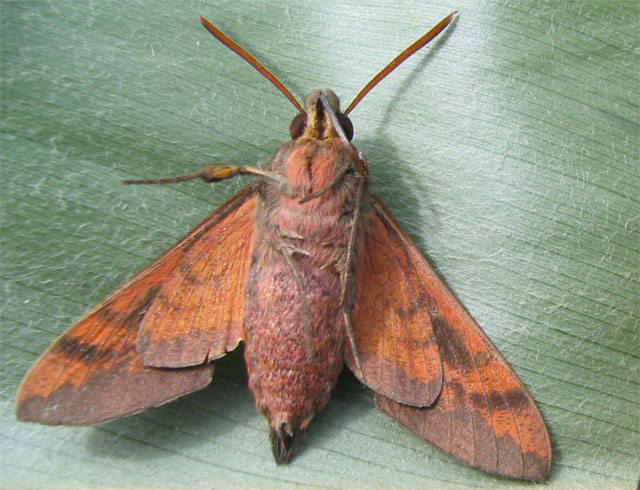
Laurie Henneman reports them from the Alaka`i Swamp, island of Kaua`i,
and writes,
"This species is not a usual resident of the swamp, but is more abundant in drier forest. I collected only 5 caterpillars in two
years, although one night at a blacklight I attracted several adults at the drier of my two plots. It is likely that dry weather in the
swamp over the previous several years made the habitat more accessible to H. calida."
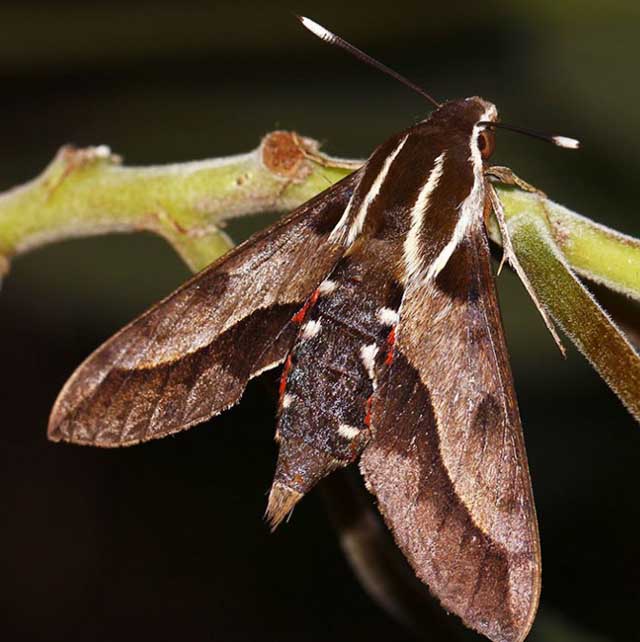
Hyles calida calida Hawaii, courtesy of Nate Yuen.
FLIGHT TIMES:
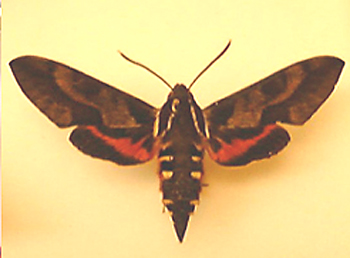
ECLOSION:
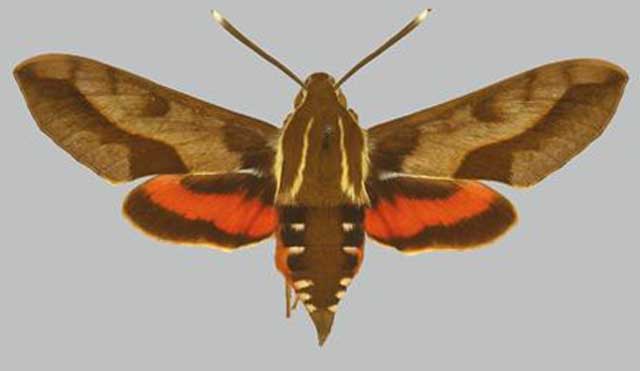
Hyles calida calida male, Oahu, Hawaii, Creative Commons,
http://sphingidae.myspecies.info/taxonomy/term/1284; Ian Kitching
Note the strong presence of black in the hindwing basal area and along the inner two/thirds of the hw costa. The same area is reddish orange in
subspecies Hyles calida hawaiiensis.
SCENTING AND MATING:
EGGS, LARVAE AND PUPAE:
Laurie Henneman reports them on Coprosma elliptica (Rubiaceae) Pilo; Endemic, and on Coprosma kauensis (Rubiaceae) Koi; Endemic.
Development time in the laboratory at 20°C for the larvae is 6 weeks with moths emerging form pupae 5-6 weeks later.
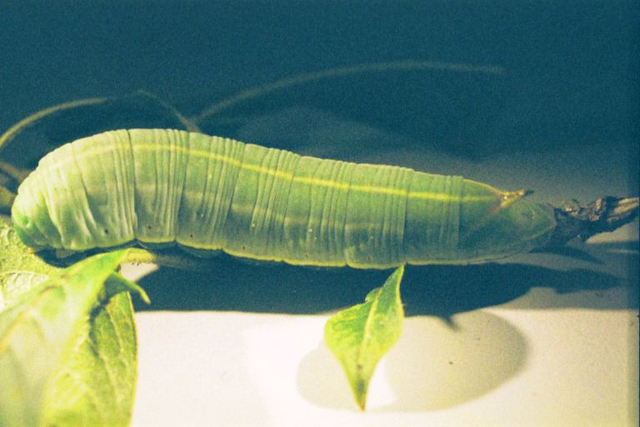
Hyles calida larva courtesy of
Laurie Henneman.
Those who first published descriptions and assigned scientific names to many insects, simply chose names of
biblical or mythological origin without any real descriptive
qualities. Their purpose was simply to set a standard for purposes
of identification by assigned name. On some occasions, names,
mostly of Latin or Greek origin, were chosen to signify a particular
character of the genus or of an individual species.
In Greek mythology, Hyles is one of the centaur warriors who fights against the lapiths.
The species name, "calida", is from the Greek feminine name, "Calida", meaning the most beautiful.
The pronunciation of scientific names is troublesome for many. The "suggestion" at the top of the page is merely a suggestion. It is based on
commonly accepted English pronunciation of Greek names and/or some fairly well accepted "rules" for latinized scientific names.
The suggested pronunciations, on this page and on other pages, are primarily put forward to assist those who hear with internal ears as they read.
There are many collectors from different countries whose intonations and accents would be different.
Use your browser "Back" button to return to the previous page.
Goto Main Sphingidae Index
Goto Macroglossini Tribe
Goto Central American Indices
Goto Carribean Islands
Goto South American Indices
Goto U.S.A. tables






